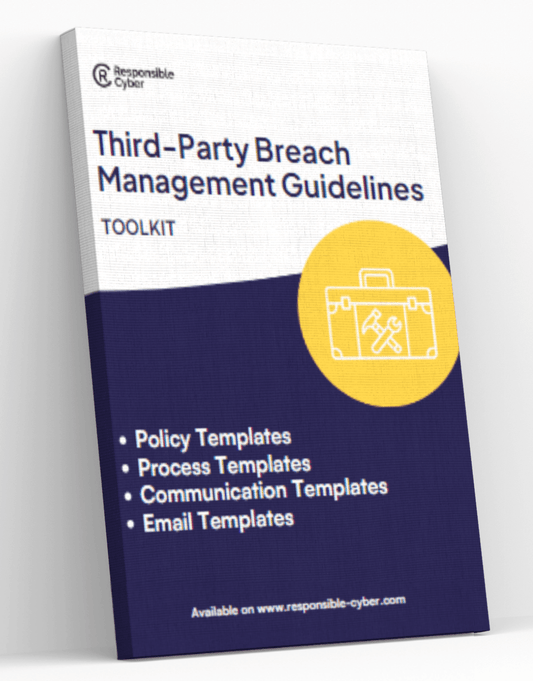Introduction to Third-Party Risk Management for SMEs: A Beginner's Guide

In the increasingly interconnected world of business, Small and Medium-sized Enterprises (SMEs) are often reliant on third-party services and partnerships to enhance their capabilities and reach. While these relationships can offer significant benefits, they also introduce risks that can undermine an SME's operations, financial performance, and reputation. This comprehensive guide provides an introduction to third-party risk management (TPRM), exploring what it is, why it is crucial for SMEs, and the basic steps to get started with a third-party risk management program.
What is Third-Party Risk Management?
Third-Party Risk Management (TPRM) is a structured approach to identifying, analyzing, and mitigating risks associated with outsourcing services or entrusting business processes to external companies. Third parties can include suppliers, vendors, contractors, and other service providers whose actions can directly impact the business operations of an SME.
The scope of TPRM includes assessing risks across various dimensions such as cybersecurity, compliance, operational dependencies, reputational factors, and strategic alignments. Effective TPRM helps ensure that the third-party engagements do not lead to adverse consequences that could impair an SME’s ability to operate effectively or meet its business objectives.
Why is Third-Party Risk Management Crucial for SMEs?
For SMEs, which typically have limited resources and less tolerance for disruptions, the implications of third-party failures can be particularly severe. Here are key reasons why TPRM is crucial for SMEs:
- Cybersecurity and Data Privacy: With increasing incidences of data breaches and cyber-attacks, SMEs need to ensure that third-party vendors who handle sensitive data have robust security measures in place.
- Compliance and Regulatory Obligations: Many industries are subject to strict regulatory requirements. SMEs must ensure that their third-party providers are compliant with relevant laws and regulations to avoid fines and legal issues.
- Operational Resilience: Dependency on third parties for critical operations can pose significant risks if those partners experience downtime or failures.
- Reputational Risk: The actions of third parties can directly impact the public perception of an SME. Mishandling of services or failures can reflect poorly on the SME, leading to lost trust and business.
- Financial Stability: Unexpected failures of third-party providers can lead to financial losses through increased costs or lost revenues.
Getting Started with Third-Party Risk Management
Implementing an effective TPRM program involves several basic steps. Here is a guide for SMEs to get started:
Step 1: Establish a TPRM Framework
- Define the Scope: Identify what types of third parties you work with, what services they provide, and how they are connected to your critical business functions.
- Develop Policies and Procedures: Create comprehensive TPRM policies that outline how third-party relationships should be managed across their lifecycle, from selection through to termination.
Step 2: Conduct Third-Party Risk Assessments
- Risk Identification: List potential risks associated with each third party. This can include financial risks, operational risks, compliance risks, and more.
- Risk Evaluation: Assess the likelihood and potential impact of each risk. This assessment can help prioritize the risks based on their severity.
Step 3: Perform Due Diligence and Monitoring
- Due Diligence: Before entering into any agreement, conduct thorough checks to ensure the third party is capable of meeting your requirements and standards, especially in terms of compliance and security.
- Continuous Monitoring: Regularly review and monitor the performance and compliance of third-party providers to ensure they continue to meet agreed-upon standards and adapt to new risks.
Step 4: Establish Contracts and Control Mechanisms
- Contracts: Ensure all contracts with third parties include clauses that enforce compliance with your TPRM policies and outline the consequences of non-compliance.
- Control Mechanisms: Implement internal controls that can trigger remedial actions if a third party fails to meet performance or compliance standards.
Step 5: Develop Incident Management and Contingency Plans
Prepare for potential third-party failures with plans that outline how to respond to different types of incidents, such as data breaches or service disruptions. This includes establishing communication strategies and having backups for critical services.
Conclusion
Third-party risk management is not just a regulatory necessity but a strategic imperative, especially for SMEs where resources are limited and the impact of third-party failures can be dramatic. By understanding the fundamentals of TPRM and taking proactive steps to implement a robust program, SMEs can protect themselves against significant risks and secure their operational future.







